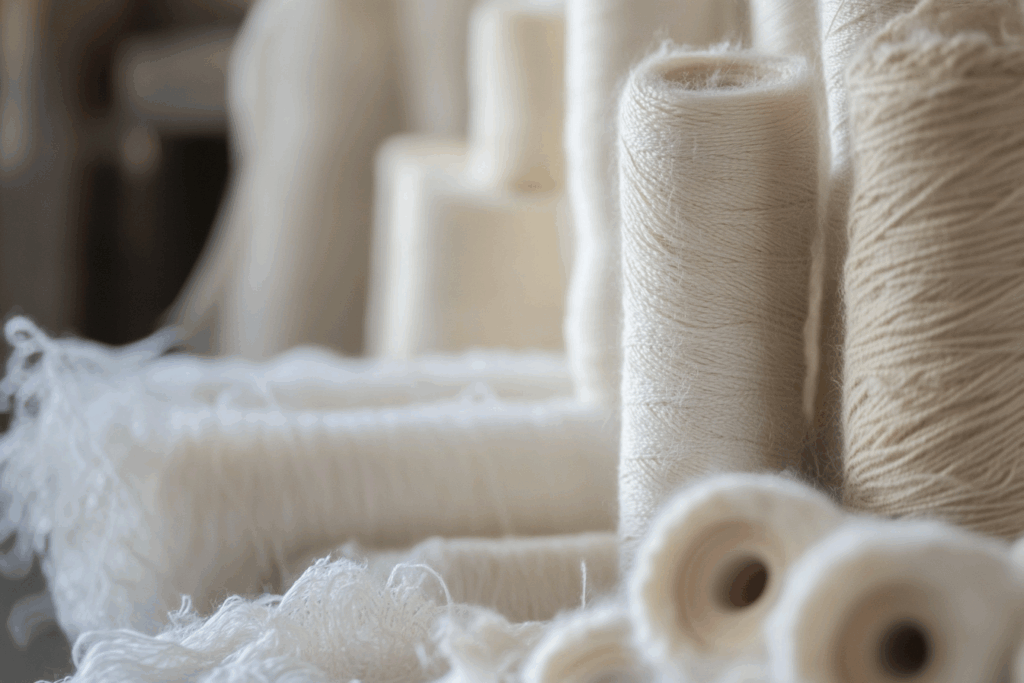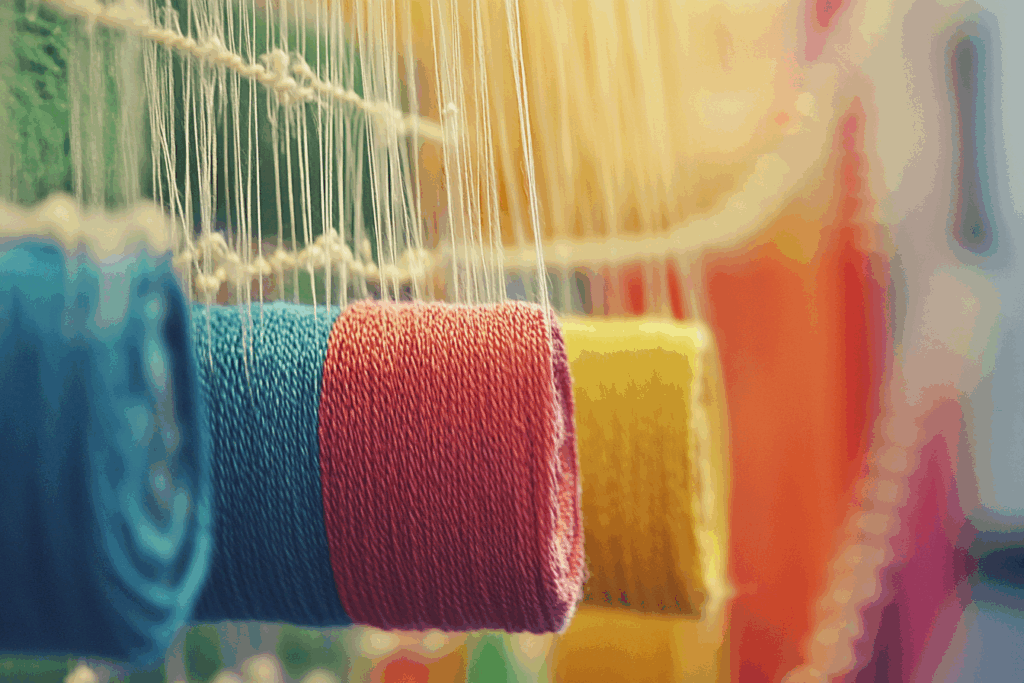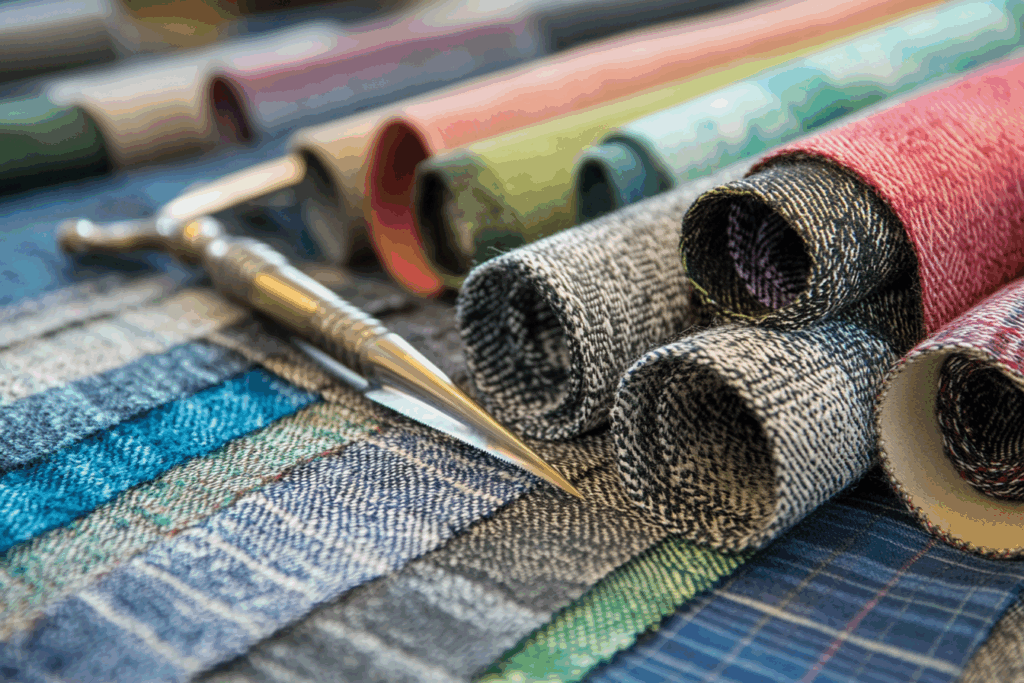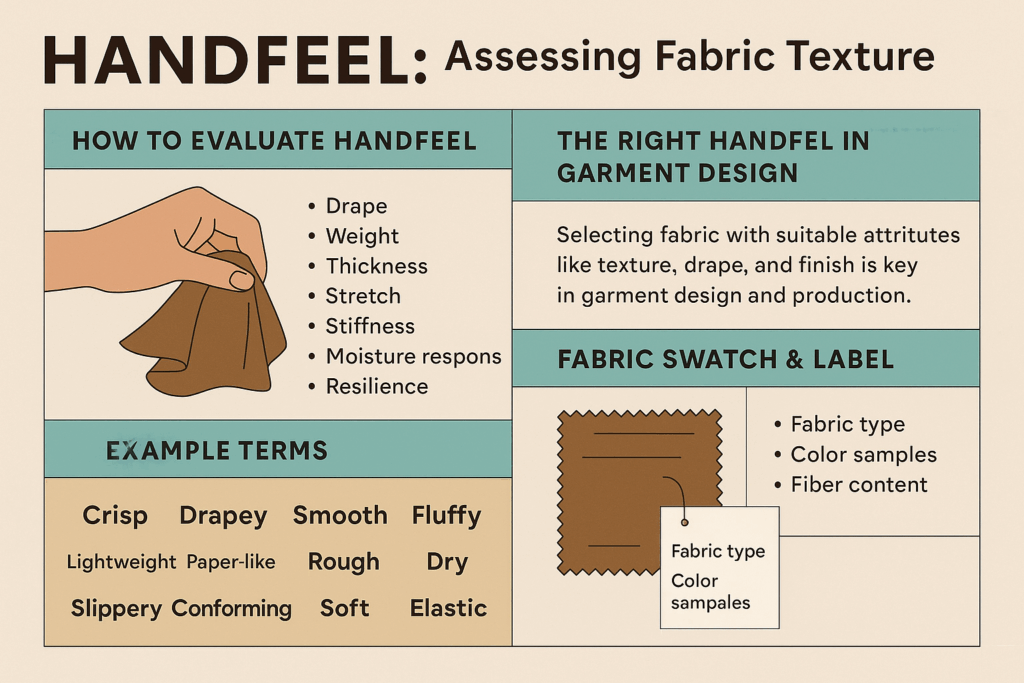Yarn Count in Fabric Design: How Thread Fineness Shapes Garment Behavior
🧵 What Is Yarn Count?
Yarn count refers to the thickness or fineness of the yarns that make up a fabric. It plays a major role in determining fabric texture, stiffness, drape, durability, and wrinkle resistance. The right yarn count directly affects a fabric’s performance and suitability for specific garment styles.
📌 Coarse yarns = thicker, stiffer fabric
📌 Fine yarns = smoother, more pliable fabric
📐 How Yarn Count Affects Fabric Properties
| Yarn Type | Fabric Effect | Typical Use |
|---|---|---|
| Coarse Yarns | Thick, stiff, strong, durable | Pants, jackets, outerwear, uniforms |
| Fine Yarns | Soft, lightweight, wrinkle-prone | Blouses, scarves, dresses, lingerie |
| Mixed Yarns | Directional stiffness or drape | Woven fabrics with warp/weft contrast |
🧷 The yarn count must align with the intended use and design features of the garment.


🔄 Warp vs. Weft: Directional Impact of Yarn Count
- Warp yarns run vertically in woven fabrics and contribute to tensile strength
- Weft yarns run horizontally and influence flexibility or drape
A fabric with fine warp yarns and coarse weft yarns will be:
- Stiff in the horizontal (weft) direction
- More structured and crisp overall
👖 Garment Suitability Based on Yarn Count
| Garment Type | Suitable Yarn Count Configuration | Reasoning |
|---|---|---|
| Slim-leg pants | Fine warp + coarse weft | Structure supports body shape, durable against stress |
| Tailored jackets | Coarse in both directions | Holds shape, resists creasing |
| Structured skirts | Coarse weft (optional) | Maintains silhouette |
| Pleated skirts | Fine, soft yarns in both directions | Allows clean, fluid pleating |
| Flowy dresses | Fine warp and weft | Encourages drape and softness |
📌 For designs involving pleats or gathers, avoid stiff weft yarns that may resist folding.
🧪 Yarn Count and Fabric Feel
Yarn count also influences handfeel and fabric appearance:
- Coarser yarns feel rougher and firmer
- Finer yarns provide a smooth, soft touch
- High-twist yarns feel crisp, while low-twist yarns feel plush
This affects how the fabric interacts with light, movement, and body contours.
🔧 Design Tip
Before selecting fabric for a garment, consider:
- Is stiffness in one direction acceptable or desirable?
- Will the fabric allow for the silhouette you want?
- Will the garment require pleating, draping, or tailoring?
🧷 A fabric that works well for trousers may be a poor choice for a pleated skirt—even if made of the same fiber—due to yarn direction and count.
📌 Summary
Yarn count is a technical factor that greatly affects fabric selection in fashion design and production. From stiffness and thickness to wrinkle resistance and drape, the structure created by coarse or fine yarns must be matched to the intended style and function of the garment. Thoughtful pairing of yarn direction and garment purpose helps optimize both appearance and performance, ensuring garments look good, fit well, and move as intended.



